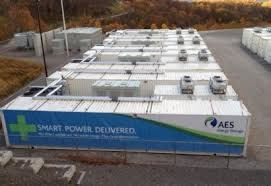US Deploys 234 Megawatt-Hours Of Energy Storage In Q1 In Largest Quarter Ever
 Joshua S Hill for CleanTechnica: The United States had its largest ever quarter for energy storage deployment this year, deploying 234 megawatt-hours worth of energy storage across the first quarter of the year, representing a more than fiftyfold growth as compared to the same quarter a year earlier.
Joshua S Hill for CleanTechnica: The United States had its largest ever quarter for energy storage deployment this year, deploying 234 megawatt-hours worth of energy storage across the first quarter of the year, representing a more than fiftyfold growth as compared to the same quarter a year earlier.
GTM Research published its latest U.S. Energy Storage Monitor in conjunction with the Energy Storage Association (ESA) this week. The report includes two primary figures — 71 megawatts (MW) of new energy storage deployed in the first quarter, a 276% growth over the first quarter of 2016, but a 50% decrease on the fourth quarter of 2016, continuing a long-running trend that sees the first quarter of a new year slowing somewhat on the overactive previous fourth quarter. The second figure is the record-breaking 233.7 MWh of energy storage deployed in the first quarter, a 2% increase over the immediately-preceding fourth quarter, but a mammoth 944% increase over the first quarter of 2016.
“Much of this growth can be attributed to a shift from short-duration projects to medium- and long-duration projects in the utility-scale market, along with a surge of deployments geared to offset the Aliso Canyon natural gas leak,” said Ravi Manghani, GTM Research’s director of energy storage. “Although, the industry shouldn’t get too comfortable, as with fulfilment of Aliso Canyon deployments, there aren’t that many 10+ megawatt-hour projects in the 2017 pipeline, indicating that the first quarter may be the largest quarter this year.” Full Article:
Comments (0)
This post does not have any comments. Be the first to leave a comment below.
